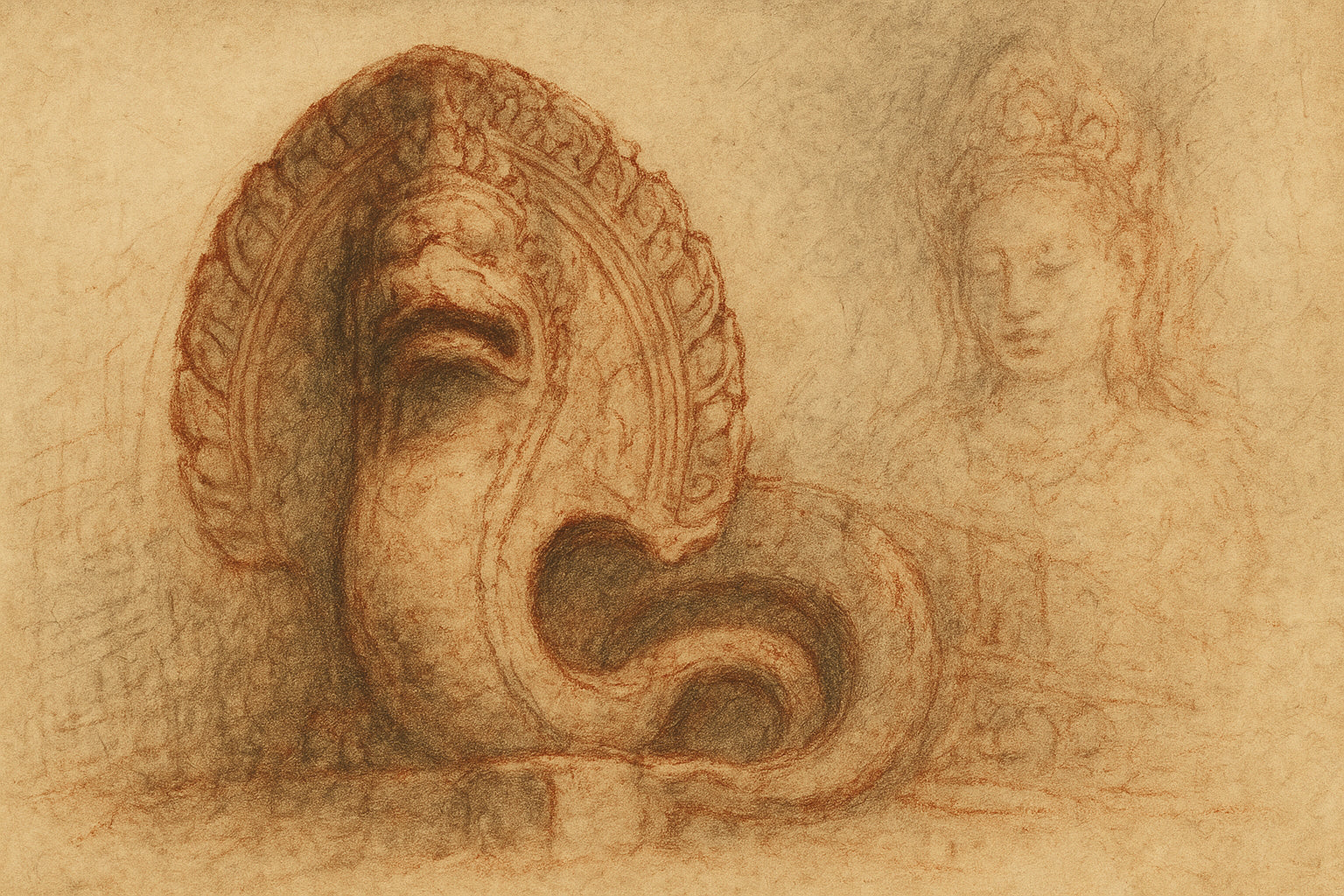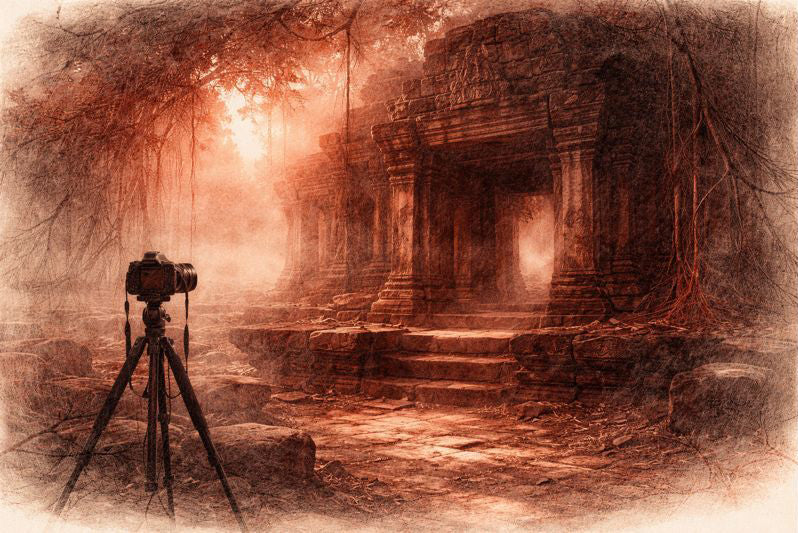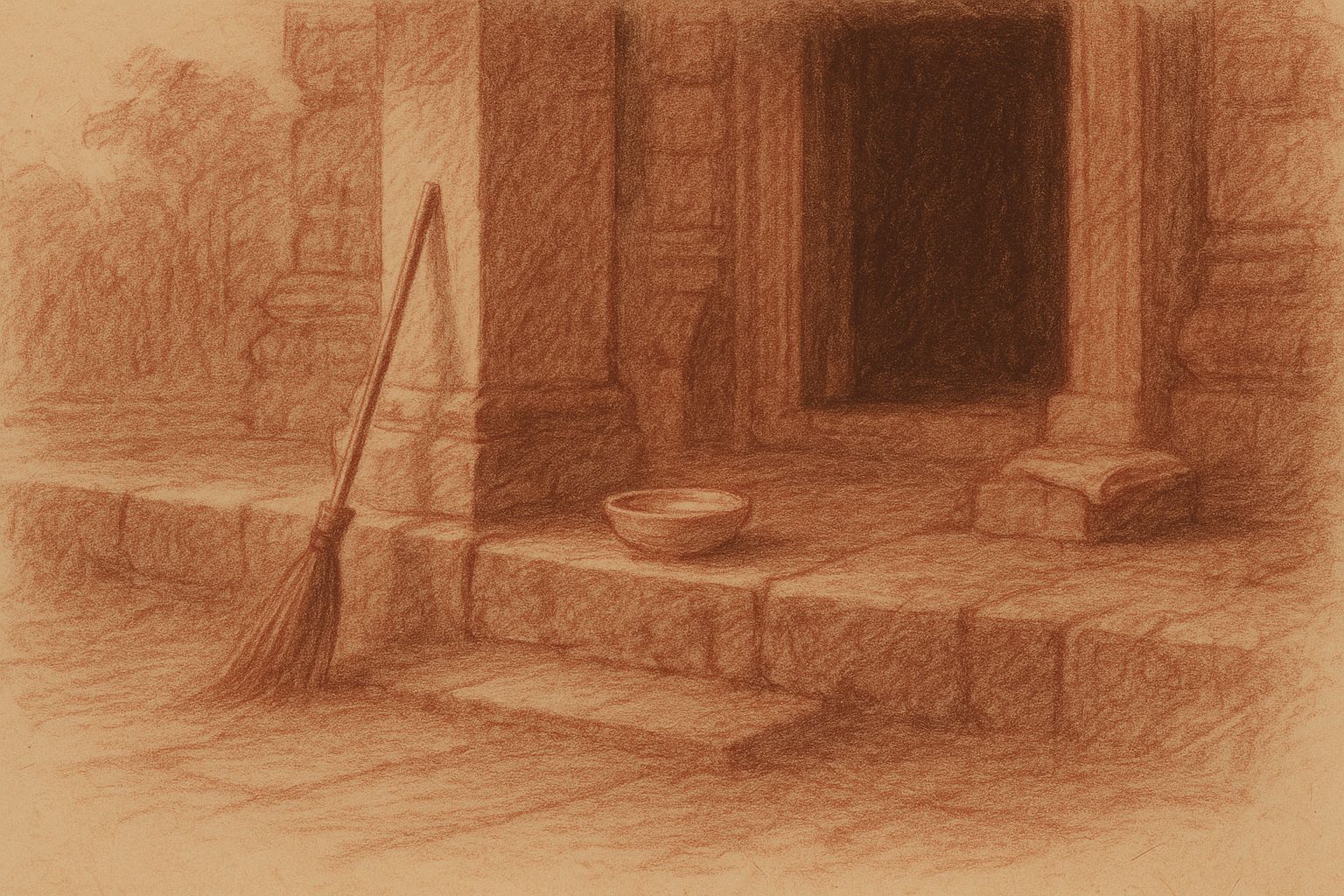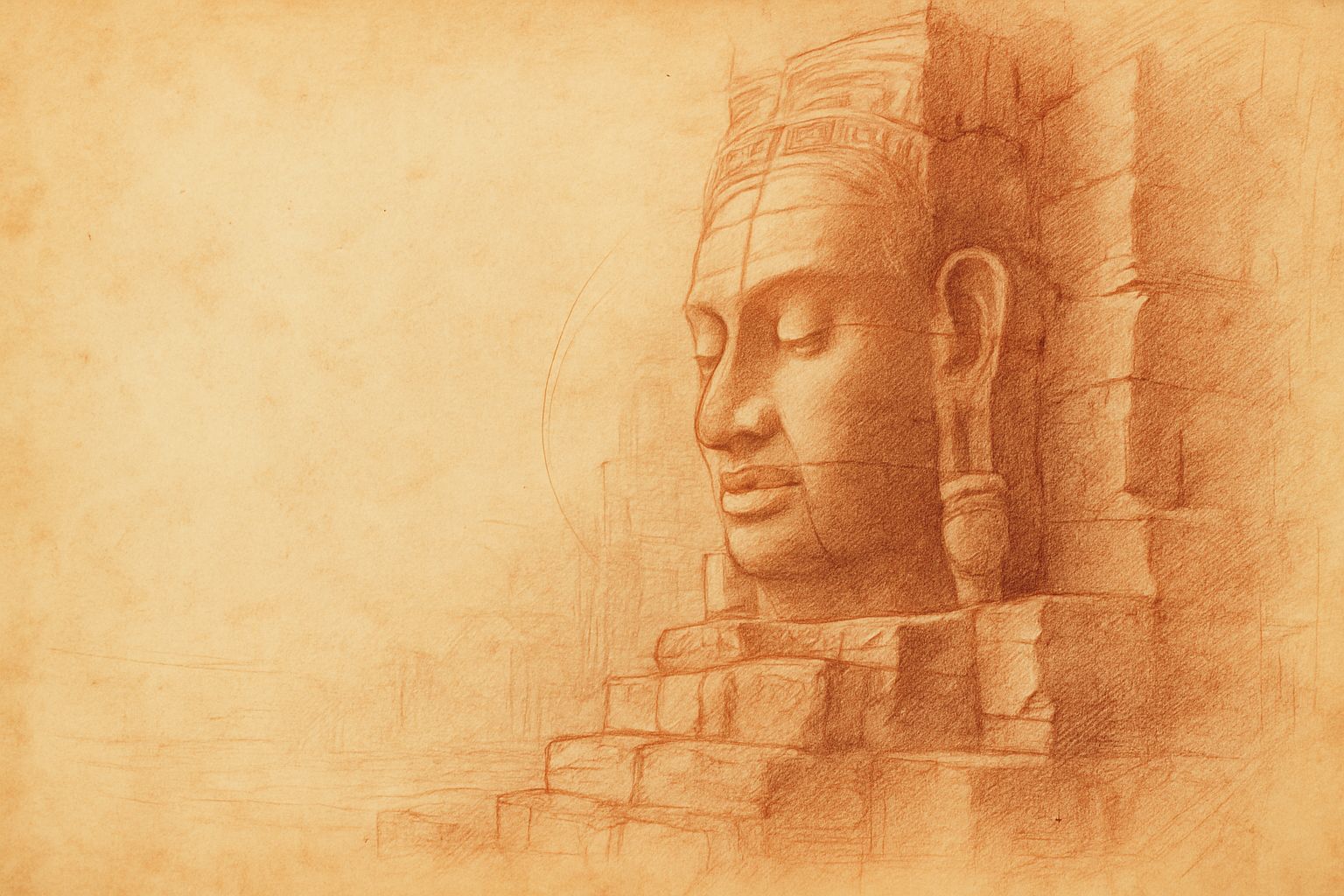Complimentary worldwide shipping on orders over $400 · No import tariffs for most countries
Complimentary worldwide shipping on orders over $400 · No import tariffs for most countries

Field Note: Blue Hour at Angkor
2 min read
The stone remembers what we forget: hunger, silence, the long weight of waiting.
The blue hour settles like a veil drawn across the temple’s brow. Light pools in the crevices of sandstone—faded carvings of apsaras and gods, their bodies softened by centuries of rain. The jungle exhales. Cicadas mark the silence with their patient insistence. Somewhere a bird carries the last syllable of the day into shadow.
I stand before a pediment where the sculpted naga coils in its broken arch. Its mouth is open, but no teeth remain. The stone remembers hunger, though its appetite is now silence. To linger here is to feel the pulse of absence, the body of time stretched taut between dusk and night.
A monk once told me that the blue hour is when the spirits stir—the moment between offerings and forgetting. I watch as the stone breathes in shadow and breathes out memory. Every crack becomes a wound that has learned to sing. Every hollow carries the river’s hush.
I take out my sketchbook. Chalk to paper. A fragment of the naga, unfinished, dissolving at the edges. To draw is not to capture but to listen. To listen is to enter. The hand follows what the stone has already spoken: patience, fracture, endurance.
Blue hour lingers.
Hunger without teeth remains.
Stone learns to be still.
When night fully arrives, the temple is no longer ruin but vessel. The carvings dissolve into shadow, and silence becomes the only inscription left to read. I close the book and bow—not to the gods who once claimed these walls, but to the stones themselves, who keep faith with hunger long after appetite has passed.
Step through.
Also in Library

Before the Shutter Falls
3 min read
Before the shutter falls, fear sharpens and doubt measures the cost of waiting. In the quiet hours before dawn, the act of not-yet-beginning becomes a discipline of attention. This essay reflects on patience, restraint, and the quiet mercy that arrives when outcome loosens its hold.

Those Who Keep the Way Open — On the Quiet Guardians of Angkor’s Thresholds
3 min read
Quiet gestures shape the way into Angkor — a swept stone, a refilled bowl, a hand steadying a guardian lion. This essay reflects on the unseen custodians whose daily care keeps the thresholds open, revealing how sacredness endures not through stone alone, but through those who tend its meaning.

Multiplicity and Mercy — The Face Towers of Jayavarman VII
5 min read
A new vision of kingship rises at the Bayon: serene faces turned to every horizon, shaping a world where authority is expressed as care. Moving through the terraces, one enters a field of steady, compassionate presence — a landscape where stone, light, and time teach through quiet attention.
Join My Studio Journal
Receive occasional letters from my studio in Siem Reap—offering a glimpse into my creative process, early access to new fine art prints, field notes from the temples of Angkor, exhibition announcements, and reflections on beauty, impermanence, and the spirit of place.
No noise. No clutter. Just quiet inspiration, delivered gently.
Subscribe and stay connected to the unfolding story.

Join My Studio Journal
Receive occasional letters from my studio in Siem Reap—offering a glimpse into my creative process, early access to new fine art prints, field notes from the temples of Angkor, exhibition announcements, and reflections on beauty, impermanence, and the spirit of place.
No noise. No clutter. Just quiet inspiration, delivered gently.
Subscribe and stay connected to the unfolding story.
